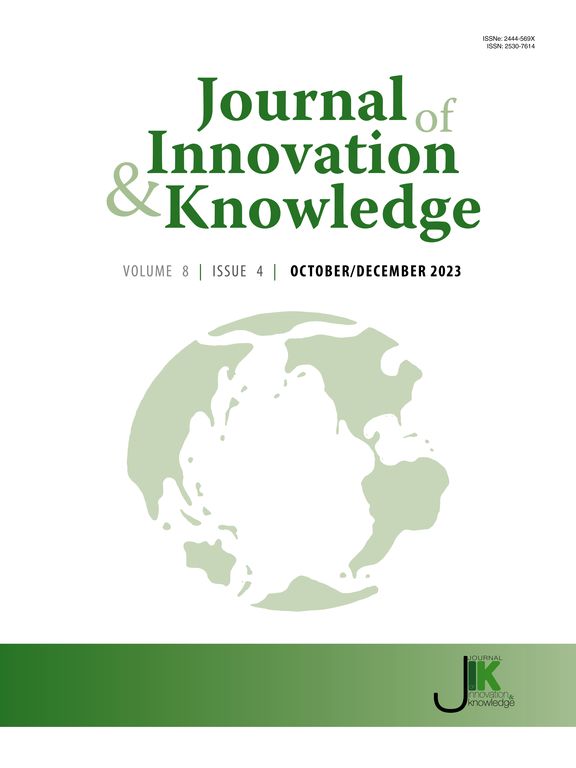新兴市场企业商业模式创新的双重绩效:一种配置方法
IF 15.5
1区 管理学
Q1 BUSINESS
引用次数: 0
摘要
商业模式创新(BMI)是企业成长的关键驱动力,但其在新兴市场企业(eme)中的实施仍未得到充分探索。为了弥补这一差距,本研究采用了一种配置方法,系统地研究了主题BMI、战略取向和环境特征之间的复杂因果关系,同时考虑了eme的双重绩效要求——实质性和象征性。通过对中国EMEs的模糊集定性比较分析,我们发现了三个主要发现:(1)BMI的开创和完善有不同的机制。开创性的BMI通过培养差异化优势来提高实质性绩效,而完善BMI通过改进现有模型来提高象征性绩效,以更好地满足明确的客户需求。(2)在追求双重绩效结果的过程中,开拓和完善BMI是相辅相成的。它们的协同整合对于实现双重业绩目标至关重要。(3)单靠双BMI不足以实现双性能。相反,必须与战略方向和环境特征保持一致。具体而言,数字导向的协同作用提高了企业的实质性绩效,而政策导向和环境慷慨的相互作用提高了企业的象征性绩效。本文章由计算机程序翻译,如有差异,请以英文原文为准。
Dual performance of business model innovation in emerging market enterprises: A configurational approach
Business model innovation (BMI) is a critical driver of enterprise growth, yet its implementation in emerging market enterprises (EMEs) remains underexplored. To bridge this gap, our study adopts a configurational approach to systematically investigate the complex causal relationships among thematic BMI, strategic orientations, and environmental characteristics, while considering the dual performance imperatives—substantive and symbolic—of EMEs. Using fuzzy-set qualitative comparative analysis on EMEs from China, we reveal three key findings: (1) Pioneering and perfecting BMI operates through distinct mechanisms. Pioneering BMI enhances substantive performance by fostering differentiation advantages, whereas perfecting BMI improves symbolic performance by refining existing models to better meet articulated customer needs. (2) In pursuing dual performance outcomes, pioneering and perfecting BMI are mutually reinforcing. Their synergistic integration is essential for achieving dual performance objectives. (3) Dual BMI alone is insufficient to realize dual performance. Instead, alignment with strategic orientation and environmental characteristics is essential. Specifically, the synergy of digital orientation enhances firms’ substantive performance, whereas the interplay of policy orientation and environmental munificence enhances symbolic performance.
求助全文
通过发布文献求助,成功后即可免费获取论文全文。
去求助
来源期刊

Journal of Innovation & Knowledge
Multiple-
CiteScore
16.10
自引率
12.70%
发文量
118
审稿时长
37 days
期刊介绍:
The Journal of Innovation and Knowledge (JIK) explores how innovation drives knowledge creation and vice versa, emphasizing that not all innovation leads to knowledge, but enduring innovation across diverse fields fosters theory and knowledge. JIK invites papers on innovations enhancing or generating knowledge, covering innovation processes, structures, outcomes, and behaviors at various levels. Articles in JIK examine knowledge-related changes promoting innovation for societal best practices.
JIK serves as a platform for high-quality studies undergoing double-blind peer review, ensuring global dissemination to scholars, practitioners, and policymakers who recognize innovation and knowledge as economic drivers. It publishes theoretical articles, empirical studies, case studies, reviews, and other content, addressing current trends and emerging topics in innovation and knowledge. The journal welcomes suggestions for special issues and encourages articles to showcase contextual differences and lessons for a broad audience.
In essence, JIK is an interdisciplinary journal dedicated to advancing theoretical and practical innovations and knowledge across multiple fields, including Economics, Business and Management, Engineering, Science, and Education.
 求助内容:
求助内容: 应助结果提醒方式:
应助结果提醒方式:


